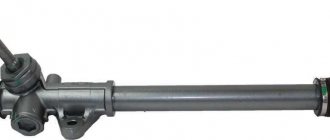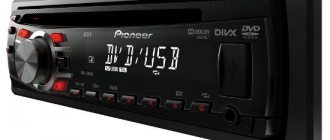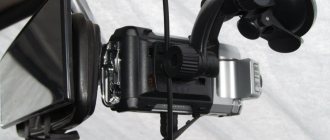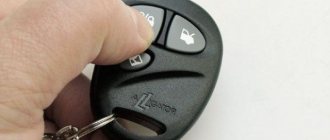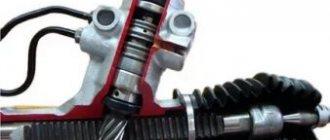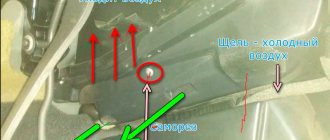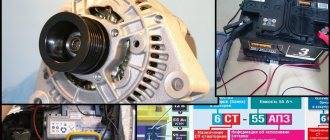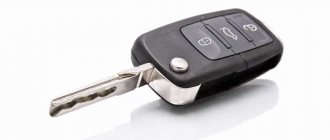A technical inspection of a car is necessary to check its serviceability and technical condition. Depending on the year of manufacture and category of the vehicle, the law provides for different options.
The new rules came into force at the beginning of 2012. The question of what is the timing of inspection for new cars is of great importance for many car owners who have recently purchased a new car.
Despite significant changes made to the current rules, the technical examination procedure is relevant for all categories of cars. However, some of them may not undergo maintenance for a certain time.
This process makes it possible to identify all breakdowns and technical malfunctions and evaluates the performance of the vehicle using an extensive list of parameters.
At the end of the procedure, experts draw conclusions and give a conclusion; it can be not only positive, but also negative.
In some cases, the car does not pass technical inspection, then the owner is given 20 days to completely eliminate all problems. After the allotted time has passed, the machine must go through the procedure again.
If there are no faults, the driver will be able to receive a diagnostic card. These rules are relevant for those who want to find out after how many years new cars undergo technical inspection.
In accordance with the law, such cars are exempt from maintenance for three years. But you should understand in detail all possible nuances.
Vehicle age and maintenance period
Monitoring the technical condition of vehicles is regulated by regulations. This also applies to the age and status of vehicles that require technical inspection.
Previously, when undergoing maintenance, mandatory insurance was required from the owners. Now it is not needed for such a procedure.
The legislation establishes when to undergo technical inspection on a new car, and the frequency of receipt of maintenance for other vehicles.
When calculating the frequency of maintenance, the year of manufacture of the vehicle is also included. For example, if a car was produced in 2020, then a technical inspection must be done in 2020.
The validity period of the technical inspection is calculated in calendar years from the date of the first maintenance. Sometimes the owner, for some reason, needs to obtain a maintenance certificate before the expiration of the previous one. Then he can do it earlier in the general order.
Questions with documents
When the vehicle undergoes maintenance, supporting documents are issued. Nowadays, the Diagnostic Card serves as such evidence. With it, the car owner usually applies to the insurance company to apply for compulsory motor third party liability insurance (MTPL) or CASCO insurance. The information is necessary for the insurance company to confirm the condition of the car.
A new car is not required to undergo maintenance, so during the first 36 months there should be no issues with the registration of an insurance contract. It is enough to show documents for the right to own or use the car. You will not need to present any supporting Diagnostic Card.
When to undergo inspection on a new car
An important question remains when to undergo technical inspection on a new car.
According to the law, trucks weighing up to 3.5 tons, cars, motorcycles and other motor vehicles, trailers and semi-trailers not older than three years do not need to undergo technical inspection.
After a three-year period has passed from the year of their manufacture, the technical inspection procedure will become mandatory. The only exceptions are trailers weighing no more than 3.5 tons, when their owners are individuals.
Thus, technical inspection for a new car only needs to be done three years from the date of release of the car. If the car is from 3 to 7 years old, then it needs to undergo maintenance every two years. After 7 years - once a year.
Inspection of a new car: after how many years is the procedure required?
As soon as a person gets a car, the concept of “technical inspection” inevitably enters his life.
The rules for passing and the structures authorized to carry it out change, but the technical inspection process itself remains unchanged.
The rules for diagnostic inspection of cars were changed quite a lot a few years ago, and now the question often arises: “how to undergo a technical inspection of a new car and after how many years does it need to be done?”
No special documents are required to complete the procedure. Everything is standard: the owner’s passport, driver’s license, PTS and car registration certificate, power of attorney, if the vehicle owner is not responsible for the technical inspection.
So, let’s figure out when (how many years after purchase) you need to undergo technical inspection on a new car. There were no special innovations in the rules in 2016. There are new changes (quite radical ones) that appeared in previous years. Not all car enthusiasts still know about them.
Today, the law on vehicle diagnostics, adopted in 2011, with subsequent amendments and additions, and the rules introduced in 2012 with amendments from 2014 are still relevant. According to these and some other legislative and regulatory acts in our country, all cars are subject to technical inspection. Exceptions: cars less than three years old from the date of manufacture are not inspected.
This list includes:
- Cars;
- trucks (no more than 3.5 tons);
- motorcycles;
- trailers and semi-trailers.
The technical condition of a new car during the warranty period is controlled by the car owner himself.
Reputable car dealerships usually provide a three or five year warranty when selling. Within a year, they may offer to carry out a technical check of the car in their specialized center or do it at the buyer’s request.
According to the latest rules, technical inspection, at the discretion of the car owner, can be carried out anywhere, and not just at the place of registration, as was the case before. This innovation is undoubtedly very convenient for car owners.
Technical inspection can now be carried out at any authorized organization. Previously, this could only be done at the traffic police department at the driver’s place of registration.
Document of serviceability
Experienced drivers remember that previously a special inspection ticket was issued. Some time ago (in 2012), coupons were abolished.
Now a diagnostic card is a document confirming the excellent technical condition of a vehicle.
What is she like?
This is a standard A4 document in the form of a table. The table includes complete information about vehicles. Plus a conclusion about whether it can be used or not.
The document is given a unique number.
It is certified by the signature of a technical expert. One copy is kept by the expert for three years, the second is issued to the car owner. It is impossible to counterfeit the card, since it is electronically included in a unified automated information system of technical services, where it remains for up to five years.
Now, if you lose the paper version of the card, you can always restore it. Moreover, it is completely free, just like the original diagnostic card, because the state duty has been cancelled.
Owners of new cars do not need a diagnostic card. The serviceability of the vehicle is confirmed by the fact that its service life is less than three years.
It is enough to have a title and a certificate of ownership. These documents contain information about the production date of the machine.
When does a new car undergo inspection?
As soon as the car is three years old, including the year of manufacture, it will be necessary to undergo a technical inspection.
If a car that is not yet three years old is sold, the new owner does not need to carry out a technical inspection until the car “celebrates” its third anniversary. It's the same with the road map. It does not need to be changed when selling or buying a car before its expiration date.
Deadlines for passing technical inspection
Many people are concerned about how long a technical inspection is valid for a new car.
After the service life of a new car without a diagnostic card has expired and the first technical inspection has been passed, the car should be prepared for the next procedure only after two years.
According to the current rules, cars between three and seven years old are inspected every two years.
Cars that were produced more than seven years ago undergo annual technical inspection.
A number of vehicles - passenger transport, taxis, trucks transporting dangerous goods - are required to check their technical condition every six months.
The rules allow that a car owner, including a new car, on his own initiative, if he suspects a malfunction, can apply for an extraordinary technical inspection and undergo it at a certified diagnostic center.
How is the technical inspection carried out?
The procedure takes place according to 65 parameters and includes the following main points:
- instrumental diagnostics are carried out;
- the operation of the braking and driving systems (tire condition) is analyzed;
- looks like lighting devices, headlight adjustment;
- the degree of play in the steering wheel and suspension is assessed;
- exhaust emissions are checked for toxicity in accordance with the standard;
- checked for compliance with standards - technical fluids;
- the operation of door locks, wipers and washers is examined;
- looks at the condition of the rear view mirrors;
- the degree of glass transparency is assessed;
- seat belts are checked for functionality and compliance;
- the presence of license plates is checked;
- The presence, compliance with standards and expiration date of the fire extinguisher and first aid kit, and the presence of an emergency triangle are checked.
If the car is in good working order in all respects, a diagnostic card is issued confirming successful completion of the technical inspection.
Otherwise, a card is issued with a conclusion that further operation of the car is impossible. A list of faults is also attached here, the period for correction of which is given three weeks.
Then resubmit the vehicle for inspection. Re-inspection is carried out only according to the list of faults.
If after 21 days the car is not presented, in the future the technical inspection will have to be repeated in all respects.
Inspection and motor vehicle liability
According to current rules, before insuring a car and receiving a compulsory motor liability insurance policy, you must undergo a technical inspection. Previously, it was the other way around: first insurance, then technical inspection.
The insurer's requirement to provide a diagnostic card for a car that is not required to have one is illegal.
Cost of the procedure
In market conditions, when transferring the rights to carry out the procedure to private accredited companies, prices vary depending on the location of the inspection and the type of car.
Inspection of cars in 2020 can cost about 700 rubles, trucks on average from a thousand to one and a half thousand.
Payments go through Sberbank using the details of the organization performing the procedure.
Responsibility under the law for the technical serviceability of a vehicle is borne by the manufacturer or car dealer for the first three years from the date of release, then after passing the technical inspection - by an authorized organization represented by its expert.
And, nevertheless, the car owner is the main responsible person in this matter. It is he who must monitor and promptly check the technical condition of the car, thereby guaranteeing himself and others safety while driving on the road.
Dear readers, the information in the article may be out of date, take advantage of a free consultation by calling: Moscow +7
, St. Petersburg
+7 (812) 317-70-86
or via the feedback form below.
Source: https://lawyer-guide.ru/administrativnoe-pravo/oformlenie-dokumentov/texosmotr-novoj-mashiny-cherez-skolko-let.html
When is a diagnostic card needed?
The diagnostic card is an important document for issuing an MTPL policy . It can be considered an analogue of a technical inspection ticket.
A distinctive feature is its content, information about the condition of the components and assemblies of the car is more detailed.
And the most important thing is the conclusion about whether the vehicle meets the special requirements and standards approved in European countries.
Changes in legislation allow you to refuse to undergo a technical inspection if the car is less than 3 years old. In 2019, even without a diagnostic card, you can apply for an MTPL policy for a new car.
The procedure for obtaining a diagnostic card has changed significantly:
- Now the traffic police do not take part in maintenance. Authorized stations are responsible for this. Their employees must conduct a thorough inspection of the car, and record the results in two paper and one electronic copies of the diagnostic card.
- One copy is given to the owner of the car; the operator enters all information electronically into the EAISTO system.
- If a person loses the diagnostic card, he will not face the same problems that he would have to face if he lost the car purchase agreement. The car owner can receive a duplicate of the diagnostic card even on the day of application after paying the state fee.
Despite the fact that a diagnostic card for a new car is not required, you should not delay too long in insuring your car under a compulsory motor liability insurance policy. Compulsory insurance always makes it possible to feel calm and confident on the road.
Sometimes situations arise when obtaining a diagnostic card for a new car may be necessary.
In the case of a sale or purchase, the future owner may insist on an inspection to ensure that his new property is in excellent condition.
Stay at home and call the clinic: what to do if there is no coronavirus test result for a long time
How long someone infected with COVID-19 or someone who has been in contact with him will spend in quarantine with a sick leave certificate and without work depends not only on his well-being. An exclusively negative coronavirus test remains your ticket to the big world, no matter how many tests are done. If the test is lost or delayed in the laboratory, the quarantine can last indefinitely.
The Ministry of Health of Primorye says that testing for COVID-19 is currently happening with virtually no delays. Nevertheless, the head of the regional Ministry of Health, Anastasia Khudchenko, admitted in July at a meeting of the Legislative Assembly that patients do not always receive results on time.
The editors of VL.ru are regularly contacted by readers who have encountered problems testing for coronavirus.
Thus, one resident of Vladivostok waited three weeks for the results of a COVID-19 test and suspected that her test was simply lost. Only after several calls to the clinic they took a second test, which turned out to be positive. By this time, she had spent almost a month in quarantine, wondering how long the Rospotrebnadzor order was valid and what to do if the test results were not reported.
Another reader of ours wrote that she became infected with coronavirus and was on sick leave at home. After some time, they took a control test from her, but the doctor at clinic No. 4 in Vladivostok discharged her from sick leave and sent her to work without waiting for the results of this test. The control test eventually gave a positive result, and the woman had already gone to work for several days.
In theory, those who have only been in contact with the sick person are given one test and, if the result is negative, they are released from quarantine. For those whose symptoms suggest COVID-19, the procedure is similar - you will have to remain in quarantine until the test result comes back, no matter how long it takes. But for those who have already been confirmed to have coronavirus, they need to receive two negative test results to be discharged from sick leave. Although this theory does not always work in practice.
How long can quarantine last for sick people and contacts, what to do if the test result has not arrived or they are being discharged from sick leave without tests - Evgenia Shutka, head of the department for organizing medical care for the adult population of the Primorsky Ministry of Health, answered
– How long should a coronavirus test take, from taking a smear to reporting the result?
– At the moment, the laboratory issues an analysis within two working days. But the day of smear collection is not included in this period. It still takes one or two working days to inform the patient of the result. If the analysis was taken on Friday, the laboratory will begin research on Monday-Tuesday. On Wednesday she will give the result to a medical institution, which will be able to report it on Wednesday-Thursday, depending on workload. And if the test was taken on Monday, then the result can be obtained in three days. Therefore, it takes 3-5 days from taking a smear to announcing the test result.
As of today, we do not have patients who have not received test results for 14 days or more. This happened at the initial stage (April, May and partly in June), when the coronavirus was just discovered (remember that the test results of patients who took tests on July 6, 16, 18 were lost in the laboratory. – Note VL.ru). But this happened because only laboratories of Rospotrebnadzor had permission to work with microorganisms of the first and second pathogenicity groups. There were two of them in Vladivostok, one each in Ussuriysk and Nakhodka. At this time, test systems were ordered and people were trained. At the moment, we have launched new laboratories and managed to relieve the load on existing research centers.
– How does quarantine work for those who are not sick themselves, but have been in contact with someone who is sick?
– A person is sitting at home in quarantine. On the 8-9th day, a smear is taken from him. If no coronavirus is detected, then he is released from quarantine.
– Under what conditions are people discharged from sick leave after COVID-19?
– You can be discharged from the hospital for outpatient isolation with one negative result, if the person feels well. Already at home he must wait for the second negative result.
As for the full discharge, in clinic No. 4 [in Vladivostok. – Approx. VL.ru] there really was a violation. An investigation took place and the perpetrators were punished.
In such a case, it is necessary to complain to the head of the medical organization where the patient was observed.
– If there is no result of a control test for a long time, is it possible to simply leave quarantine after 14 days?
- No. We have recorded persistence of the virus [preservation of the virus in a functionally active state in the cells of the body]. 14 days is its incubation period from the moment of infection until the appearance or non-appearance of clinical signs. Until we have two negative results with an interval of at least 24 hours, we cannot discharge the patient.
– How long does Rospotrebnadzor’s quarantine order, which is issued for suspected COVID-19, last?
– It is valid indefinitely until doctors allow me to go back to work.
– How long do they track the geolocation of the mobile phone of someone who must be quarantined?
– Usually, when we receive negative results from two tests in a row, observation is removed.
– If a positive test result comes more than three days later, then from what point will the period of illness be counted: from taking a smear or from receiving the result?
– The duration of the disease does not depend on the smear. If a person has clinical manifestations - runny nose, cough, fever, then the disease and sick leave will be counted from this day. A smear is an additional examination method, and the end of the disease will be after two negative results.
– If a positive test result comes late, when all symptoms have disappeared, will repeat tests be done until a negative verdict is received?
- Yes. Repeated tests from asymptomatic carriers are taken no earlier than after 24 hours. For those patients who have residual cold symptoms, re-testing is carried out after 3-5 days.
– Should a person quarantine until a negative result is obtained, no matter how many tests are done?
– Yes, you need to be in isolation.
– If the results of the control test for a person who has suffered COVID-19 are delayed, then when should the clinic close their sick leave and let them go to work?
– Even if the samples were delayed, he is on sick leave. It should be closed based on only two negative results. We have a case where a person has been on sick leave for 28 days with coronavirus, although he has no clinical manifestations of the disease. This process cannot be accelerated. If we experience delays, they are not global - 2-3 days (and let us again recall how a resident of Vladivostok waited three weeks for the results of her tests. - Note VL.ru). If this happens, there are good reasons for it. For example, we had a case where two out of three laboratory assistants fell ill and the capacity of a medical institution decreased. You can call the clinic, contact its administration and find out what happened.
– Can a person who has been ill take a control test in a private clinic for a fee in order to get results faster and get out of quarantine?
- No. You cannot leave your apartment because you are in quarantine. If it turns out that you are a carrier of the virus and walked through the entrance, then this is an element of the spread of infection. Although I know that they do this when they leave their mobile phone at home. But nevertheless, there is no need to do this.
– What if you call at home and the doctors from a private clinic come in protective suits?
“Private clinics have this service, but doctors at public hospitals come out in the same suits - free of charge.
– What to do if test results are delayed or there are questions about the length of sick leave?
– You must call the reception desk of the clinic to which you are assigned. We have currently changed our call center. We tested it and were able to reach all clinics within a maximum of one minute of waiting.
Nuances you should know about
When to undergo a technical inspection on a new car is already clear, but there are some nuances that every vehicle owner should know about:
- The age of a car is determined not by the year it began operation, but by the year it was produced.
- In practice, a situation may arise where some insurance companies require a diagnostic card. They justify this by the fact that in the event of an accident, the owner of the car will not be paid for material damages, since he did not provide them with confirmation of the serviceability of the car - a diagnostic card. This requirement is not legal, so the correct decision would be to choose another insurance company.
- If a driver plans to drive a new car outside the Russian Federation, it is important to pay attention to the requirements of international conventions. Since one of the documents that must be presented at customs posts is a diagnostic card, which will confirm the serviceability of the vehicle. Sometimes this document is not enough for customs officers and they can conduct a technical inspection at the inspection site using special equipment.
- In addition to the above, it is important to pay attention to technical wear and tear. The condition of the car depends on driving style, quality of operation and other circumstances.
You should always remember that if there is a serious malfunction that was not identified because the vehicle was not inspected until the car was three years old, the car can cause significant harm to road users.
Therefore, experts advise that you still undergo vehicle maintenance for your own peace of mind.
Mandatory vehicle maintenance
Safety on public roads depends not only on competent driving and strict adherence to all traffic rules. The technical condition of the vehicle is important. A sudden failure of the brake system or failure of the steering system can cause tragic circumstances. To monitor the serviceability of vehicles moving on the roads, the state obliged their owners to undergo mandatory technical inspection at specialized enterprises accredited by the RSA.
The presence of a valid diagnostic maintenance card is the main condition for obtaining an MTPL policy.
New car inspection
To answer the question of whether a technical inspection is required for a new car, you should first clarify the type of vehicle and its purpose. When leaving a car dealership with a brand new car, it is too early to think about visiting the mandatory maintenance points. There will be no difficulties when applying for compulsory motor liability insurance.
Since in this case the law does not oblige you to undergo a technical inspection, you decide for yourself whether this procedure should be carried out for your car or not. Theoretically, a new vehicle should be in good working order, but it cannot be guaranteed that there will be no manufacturing defects. Timely detection of a dangerous defect can prevent a serious accident.
When you are confident in the serviceability of the iron horse, you don’t think about whether new cars undergo technical inspection. The time of the first visit to the inspection point depends on how the car is used, as well as on its category. The maximum deferment period is provided for cars weighing less than 3.5 tons and motorcycles. In other cases, the need for a diagnostic maintenance card occurs much earlier.
What needs to be done in a new car? (Page 1 of 2)
So, you've waited! You can finally pick up your car from the showroom. However, not everything is so simple, we recommend that you familiarize yourself with the list of what you need to check before leaving the car dealership with an important air behind the wheel of your new car (the article provides a complete list, you can not check all the points).
Interesting: Temperature in the Entrance of a Residential Building Snip
The first new car is being purchased. The first question is urgent: there is a car in stock without ABS and we have to wait several weeks with ABS and it is more expensive. Is it critical to have this thing in the car or can you drive without it? Another question: they immediately offered an additional one. supply the equipment. Because I’m buying a car for the first time, I’m asking for advice on what needs to be installed: I myself am sure of the following: that additional anti-corrosion protection and crankcase protection need to be done. Then they suggested installing rear fender liners (there are front ones): what is it, is it necessary and how does it affect the appearance of the car? Now the choice of alarm: suggested with feedback. In principle, I’m not against it, but there is another option: a simple alarm + they showed me some kind of mechanical thing for the gear lever, a massive thing. What do you advise? What else do I need for a new car? There are many questions, but no one to advise.
Deadline for first mandatory maintenance
First, let's figure out when to carry out a technical inspection for motorcycles and cars weighing no more than 3.5 tons. The deferment period in this case is legally established within three years from the date of release of the vehicle, regardless of the mileage traveled. This period is the same for Russian and foreign-made cars, regardless of their configuration - type of engine, transmission, brake and steering system drive. If gas equipment is installed on a new car, the time for the first technical inspection of the vehicle itself does not change, but every two years it is necessary to carry out diagnostics of gas equipment at specialized service stations.
Cancellation of technical inspection
For most car owners, undergoing regular technical inspection of the car remains valid. However, some vehicles received preferences in this procedure. The list of those who do not need to worry about checking the condition of their own cars logically includes private owners with passenger vehicles, trucks whose permissible weight does not exceed 3.5 tons, motorcycles and semi-trailers produced from the assembly line within the previous three years.
This means that if the car is 3 years old, you can operate it without any problems, and then sell it, buy a new one and forget about technical inspection altogether.
Calculation of the period until the first technical inspection
It is not difficult to independently determine the time for the first mandatory maintenance. The main thing is to correctly determine the start of the deferment - 3 years from the date of purchase or release of the vehicle. The date of direct purchase of the vehicle from an authorized dealer cannot be taken as a starting point.
The deferment period is counted from the time of production of the vehicle, including the year of its production. For example, if your car left the assembly line in 2020, the need for mandatory maintenance begins at the beginning of 2020, regardless of the date on which direct operation began. However, there is no need to rush to the nearest OTO operator in January. If the MTPL policy expires only at the end of the year, you can go through the maintenance procedure before contacting the insurance company.
After the first visit to the OTO operator, the question arises how long it will take to undergo a technical inspection the next time. If you have a car or truck weighing up to 3.5 tons (category B), obtain a diagnostic maintenance card for two years. It will be valid even if the owner changes, since the document is issued for the car, and not for its owner.
Until seven years have passed since the vehicle was manufactured, maintenance must be carried out every two years. Further, the frequency will decrease to one year. You can visit mandatory maintenance points more often in order to identify faults.
The inspection period for new cars used as taxis, for driving lessons, intended for transporting dangerous goods, as well as for passenger buses and trucks weighing more than 3.5 tons is shorter and is clearly regulated by the current legislation of the Russian Federation.
Inspection of a new car: how often should it be done?
According to the new amendments, cars that have been in use for 2 to 7 years must undergo maintenance every two years. If the car is more than seven years old, then the maintenance procedure is carried out every year. This rule has exceptions for vehicles that transport citizens, including public transport, taxis, and trucks transporting particularly dangerous goods over long distances. They must undergo maintenance every six months. If the car owner suspects a malfunction, then he can undergo a new MOT outside the deadline.
- general diagnostics;
- analysis of the running system operation;
- analysis of the brake system;
- checking headlights, lighting diagnostics;
- the toxicity standards of exhaust gases and technical fluids are checked;
- condition of rear view mirrors;
- door lock diagnostics;
- degree of glass transparency;
- operability of the security system in accordance with standards;
- availability of license plates;
- Availability of a first aid kit and fire extinguisher.
Systems and units subject to inspection during maintenance
Young motorists who have recently started driving do not always know how the vehicle is inspected. The purpose of mandatory maintenance is to ensure the safety of the vehicle while driving. Consequently, specialists carrying out this procedure will not pay attention to a faulty cigarette lighter or minor dents on the outer casing. They will be interested only in systems on the proper operation of which the safety of the car on the road depends - the braking system, steering, chassis and some other components and assemblies.
List of works
| Mileage, maintenance period | Service Operations |
| TO-1 15,000 km (12 months) | During the first maintenance of the Kia Rio, it is necessary to perform the following work and inspect the main components:
And replace the following consumables:
This list is basic and required for each application. In subsequent paragraphs, additional ones will be added to these points. |
| TO-2 30,000 km (24 months) | Replacement:
Inspection and testing:
|
| TO-3 45,000 km (36 months) | Replacement
Inspection and testing:
|
| TO-4 60,000 km (48 months) | Replacement:
Inspection and testing:
|
| TO-5 75,000 km (60 months) | Replacement:
Inspection and testing:
|
| TO-6 90,000 km (72 months) | Replacement:
Inspection and testing:
|
| TO-7 105,000 km (84 months) | Replacement:
Inspection and testing:
|
| TO-8 120,000 km (96 months) | Replacement:
Inspection and testing:
|
| TO-9 135,000 km (108 months) | Replacement
Inspection and testing:
|
Necessary conditions for passing MOT
The owner or another individual must present the car to the mandatory maintenance center on the basis of a power of attorney. You must have your passport and vehicle registration certificate or PTS with you. The car must be in full working order and equipped with all the required equipment - a first aid kit, a fire extinguisher and a warning triangle. It is unacceptable to make changes to the design that are not approved by the State Traffic Safety Inspectorate and not provided for by the manufacturer.
If any malfunctions or inconsistencies are detected, you will be given a diagnostic card, which is valid for only 20 days. During this time, it is necessary to eliminate all defects and undergo the inspection procedure again.
Registration of compulsory motor liability insurance without a diagnostic card
As you already know, a new car under three years of age is not allowed to undergo mandatory maintenance. However, you must obtain an MTPL policy even before leaving the car dealership, in the office of which you can always find an employee of any insurance company. No one will ask you for a diagnostic card for a new car. The year of manufacture of the car is indicated in the title and vehicle registration certificate. When applying for insurance along with your driver's license, it is enough to provide one of these two documents.
A diagnostic card for a new car may be available if its owner has decided to voluntarily undergo a technical inspection. However, it will not have an impact on the registration of compulsory motor liability insurance if the deferment period has not yet expired.
conclusions
You now know how many years the first and subsequent mandatory technical inspection procedures take. After the deferment period ends, you can contact any general maintenance operator in Russia, regardless of the region of registration of the car. The rules for providing this service are the same in all regions.
It is important to contact an accredited company, information about which is included in the “Register of OTO Operators” on the official website of the RSA. Using a fake diagnostic card will deprive you of the opportunity to take out a compulsory motor liability insurance policy, and will also serve as the basis for paying compensation to the injured party - in this case, the culprit of the accident will have to compensate for the damage at his own expense.
Practicing lawyer with 10 years of experience. Specializations: criminal law, insurance law, administrative offenses.
You can only travel on public roads in serviceable vehicles. This means that the car must meet certain conditions imposed on the technical condition of its main components, mechanisms and elements. In this regard, you need to figure out whether a technical inspection is required for a new car or whether other standards apply in this case.
Is it necessary to undergo maintenance for a new car?
A car that does not pose a danger to the life and health of the driver, passengers and other road users is not just a moving car. A complete list of requirements that determine the serviceable condition of a car is contained in Federal Law No. 170-FZ of July 1, 2011 “On the technical inspection of vehicles and on amendments to certain legislative acts of the Russian Federation.”
Since the main way to purchase a new car is through dealer networks and car showrooms, which provide a guarantee of the validity of the purchase, it is logical to assume that the seller does not sell a faulty product. However, the buyer may wonder whether a new car needs to undergo inspection. Often this interest is associated with the need to take out an MTPL insurance policy.
If for a used vehicle (vehicle) a valid diagnostic card serves as confirmation of passing the technical inspection, then for a new car sufficient proof of its serviceability is a passport of the vehicle with the year of manufacture or a registration certificate. However, the concept of “new car” can be understood in different ways. Therefore, in order to get a complete picture of whether a new car requires a technical inspection, you must first determine which vehicle is considered new from the point of view of the law.
When to pass
Knowing the deadlines specified in the law for when to undergo technical inspection on a new car will help you apply for a technical condition assessment in a timely manner. After all, the absence of this data will not allow you to renew your insurance after its expiration date.
Guidance on when to undergo the first technical inspection on a new car can be found in paragraph 2 of Art. 15 of Federal Law No. 170-FZ. According to this regulatory act, “fresh” cars are subject to diagnostics only before taking out the next insurance policy for the third year from the date of manufacture.
It should be noted that this rule applies to the following vehicles:
- Cars.
- Trucks with a permissible maximum weight of not more than 3500 kg.
- Trailers and semi-trailers owned by individuals.
The frequency of inspection of a new car depends on several factors. The main one is the scope of vehicle operation. General information regarding the timing of inspection of the technical condition of vehicles is contained in the material “Frequency of technical inspection”.
Exceptions to the rules
Separately, it should be noted that the above rule regarding when it is necessary to do a technical inspection for a new car does not apply to vehicles intended for transporting people (taxis, buses and passenger minibuses), as well as to:
- trucks with a permissible weight over 3.5 tons;
- cars equipped with devices for producing light/sound signals;
- vehicles intended for driving lessons.
Vehicles that must be inspected every six months include special vehicles equipped for transporting dangerous goods, as well as trailers for them.
When traveling abroad
According to the requirements of the Vienna Convention coordinating international road traffic, drivers traveling between states must have two documents:
An additional document is a Green Card policy (or MTPL insurance for trips abroad). There is no mandatory requirement to have a diagnostic card with you confirming the technical serviceability of the machine. However, it is possible that a diagnostic card will be needed when traveling around Europe, in the event that the driver becomes involved in a traffic accident.
Voluntary inspection of technical condition
The driving style of those behind the wheel can vary greatly. But this factor often affects the technical condition of the car. The rate of wear is also influenced by other circumstances, for example, the quality of vehicle maintenance and timely repair work.
Serious malfunctions that appear during the operation of the vehicle before the car reaches the age of mandatory maintenance can lead to dangerous road situations and even cause an accident.
In this regard, some car owners listen to the recommendations of specialists and still subject their cars to a technical inspection. Why wait for a scheduled inspection if a check at a certified diagnostic center will eliminate any damage and avoid danger?
How to pass MOT
If the car owner nevertheless decides to submit his vehicle for maintenance, he must prepare for the standard procedure. However, before undergoing inspection on a new car, you need to select a point of contact. According to changes adopted in the legislation, diagnostics are carried out by operators accredited by RSA - the Russian Union of Auto Insurers. Currently, traffic police authorities do not participate in this process.
The procedure for passing a technical inspection for a new car is no different from the procedure for used vehicles. During maintenance, the main components and assemblies of the vehicle are checked.
After the assessment, the technical expert issues a diagnostic card with a conclusion, from which it follows whether the car can be operated or not. All received data enters the Unified Automated Technical Inspection System (UAISTO).
The detailed sequence of actions prescribed by law is described in the material “How to pass a car inspection in 2020.”
What you will need to pass
We draw the attention of drivers who are worried about whether a diagnostic card is needed for a new car: no one, including registration officials and insurers, has the right to demand this document from them. PTS or registration certificate in themselves are a sufficient set of documents for obtaining insurance and registering.
A diagnostic card is issued only by accredited operators or dealerships after maintenance. To undergo inspection you need to present three documents:
- Citizen's passport.
- Car registration certificate.
- Receipt for payment for the service.
You should definitely make sure that you have a fire extinguisher with a volume of at least 2 liters, a warning triangle, and from 05/04/18 also a first aid kit. A complete list of documents and other requirements are given in the article “What is needed to pass the technical inspection.”
What happens if you don’t get service from an official dealer when buying a new car?
Can I void my warranty if I don't get service from a dealer?
First of all, it is worth understanding that the warranty for a car is established not by the dealer, but by the manufacturer. A dealer is, formally speaking, an official intermediary who takes responsibility for servicing the car in accordance with the manufacturer’s recommendations. Accordingly, decisions on fulfillment of warranty obligations are ultimately made by the dealer, but on the basis of the conditions established by the manufacturer. Another fact to keep in mind is that the concept of “removal of warranty” generally does not exist. When buying a car, you should familiarize yourself with the warranty obligations and understand them: the manufacturer provides different warranty periods for different components, assemblies and parts, and the warranty does not apply to consumables at all. So no one can “completely remove the car from warranty for changing the oil at an unofficial service center.”
Each breakdown is considered separately: for example, if a car in which the oil was changed at a third-party service station develops electrical problems that no one interfered with, then nothing prevents us from solving these problems within the framework of the warranty. Moreover, even in the event of problems with the motor under the same conditions, a decision on fulfilling warranty obligations will be made only after an examination. Warranty repairs can be denied only if it is proven that the breakdown occurred precisely because of poor quality work or spare parts installed outside the dealership. Well, the choice of service location in any case remains with the owner of the car - if he has the appropriate skills, he can even perform the service himself.
What about installing additional equipment?
Everything is exactly the same here: threats from dealers to “remove the car from warranty” if an alarm system, tow bar or engine protection are installed by a third party have no basis whatsoever. It’s just that responsibility for the installed equipment will not be borne by the dealer, but by the installer, and in case of problems, an examination may also be required. For example, if after installing the alarm a short circuit and fire occurred, you will need to establish the exact cause of what happened - and if it turns out that the short circuit occurred due to low-skilled intervention in the electrical system, you will no longer have to deal with the dealer or manufacturer, but with the service itself, that he installed an alarm.
What, then, is the point of service at a dealer?
After reading the points outlined above, you may wonder: why bother to get service from a dealer at all, if you can do it cheaper elsewhere? Everything here is also simple and logical. First of all, the dealer, as an official representative of the manufacturer, takes responsibility for the quality and completeness of the work performed: that is, the owner does not need to keep in mind a list of work at each service station. Simply put, the owner pays for peace of mind: all work is carried out according to regulations and in one place, so if problems arise there is no need to figure out who to contact. In practice, this, of course, causes the opposite situation. Firstly, someone may recall the experience of dealing with unscrupulous dealers who impose unnecessary work or do not perform some procedures at all, charging a fee for it. Secondly, the maintenance schedule is not always ideal: simple examples include engine oil change intervals increased to 15, or even 20 thousand kilometers, or automatic transmission oil “for the entire service life”. However, in all these cases, potential problems will still be resolved under warranty - after all, the regulations are set by the manufacturer himself.
The second reason to undergo maintenance at the dealer is to fill out a service book. This may be important for those who regularly update their car: instead of collecting receipts and other evidence of timely maintenance of the car, it is easier to present the buyer with a completed service book with documents from the dealership. And the service history also indirectly confirms the mileage. True, here you also need to understand that the service book is not a panacea, and when buying a used car, trust not only it, but also the diagnostic results. Frauds involving twisting the mileage and affixing some stamps before the sale are quite possible. However, when selling a fresh car with low mileage, a completed service book and work orders from the dealer are still a powerful argument.
Well, another “freelance” argument in favor of visiting a dealer can be promotions, discounts and other incentives. For example, a dealer may offer a discount on original spare parts during maintenance, additional services such as free car wash, tire fitting, and so on. In addition, there are promotions aimed at attracting owners of older cars to dealers - comprehensive diagnostics at preferential special offers, reduced prices for service and spare parts, and so on. However, they themselves do not affect the warranty, so the decision here remains with the car owner.
